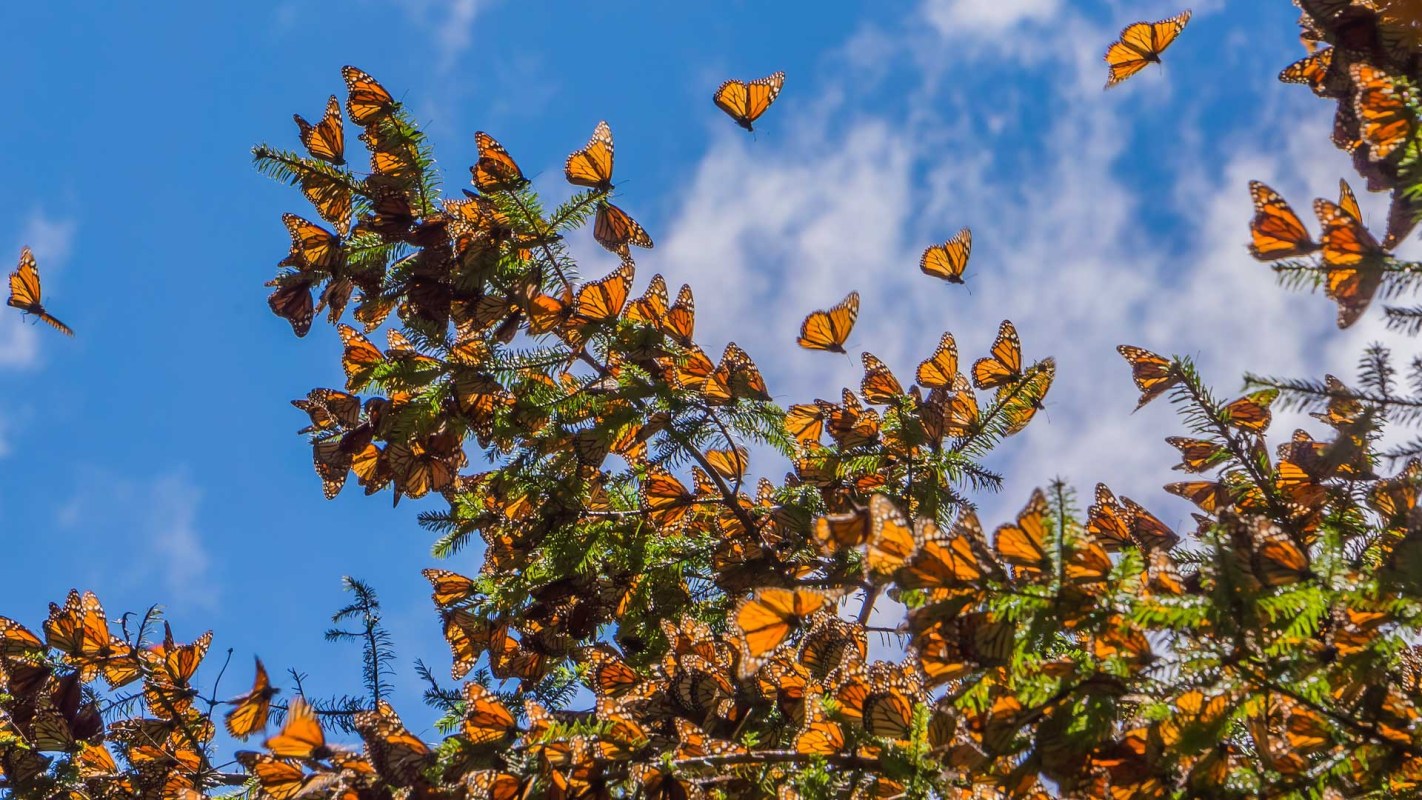Of all the most wonderful and well-known insect species in the U.S., monarch butterflies are among the most famous. Every year, these incredible creatures migrate all the way from Canada to Mexico and back again.
However, where there used to be clouds of butterflies that could cover acres of forest, they have now been reduced to a tiny fraction of their original population, the World Wildlife Fund reported.
What happened?
Monarch butterflies were recently added to the Endangered Species list after their population declined dramatically over the last few decades.
The population has continued to shrink, and this year, there are an estimated 59% fewer butterflies left than last year, the WWF reported.
Researchers estimated the number of butterflies by measuring the areas of the forest where the butterfly colonies stayed this winter. They were present in only 2.2 acres of forest, compared to 5.5 last winter and 45 acres during the 1996-1997 season.
Why does it matter if monarch butterfly populations decrease?
Losing the unique and iconic monarch butterfly with its famous long-distance migration would be a tragedy, to be sure. But this isn't just about one species, however beautiful and beloved.
Monarch butterflies are also an indicator of how the environment in their home range is doing in general. As the WWF explained, they need healthy forest to protect them from wind, rain, and cold. And healthy forest is healthy for people, too.
The areas that have been set aside for the butterflies also help protect water quality in the region, the WWF reported. Over six million people in Mexico City and its surroundings rely on the affected water systems. If the habitat is damaged and plant and animal species are lost, that could affect the geography and vegetation that helps keep the water clean.
Meanwhile, much of the reduction in the population of milkweed — the only plant that monarchs lay their eggs on — is due to widespread herbicide use, and herbicides can be just as dangerous for people as for plants.
"Fewer monarchs hibernating in their traditional forest habitat in Mexico greatly concerns all of us," said Jorge Rickards, general director of WWF Mexico. "It's critical that all communities, governments, non-governmental organizations, scientists, and others continue to strengthen our conservation and protection efforts to support the monarch's unique migration."
What's being done to protect monarch butterflies?
Across the U.S., experts and ordinary citizens are participating in efforts to plant milkweed and create a hospitable environment for monarchs and other butterflies.
Meanwhile, researchers are hard at work addressing the root causes of the monarchs' population decline. For example, one company has just developed a way for farmers to protect their fields while spraying as much as 50% less pesticide.
Join our free newsletter for cool news and cool tips that make it easy to help yourself while helping the planet.









